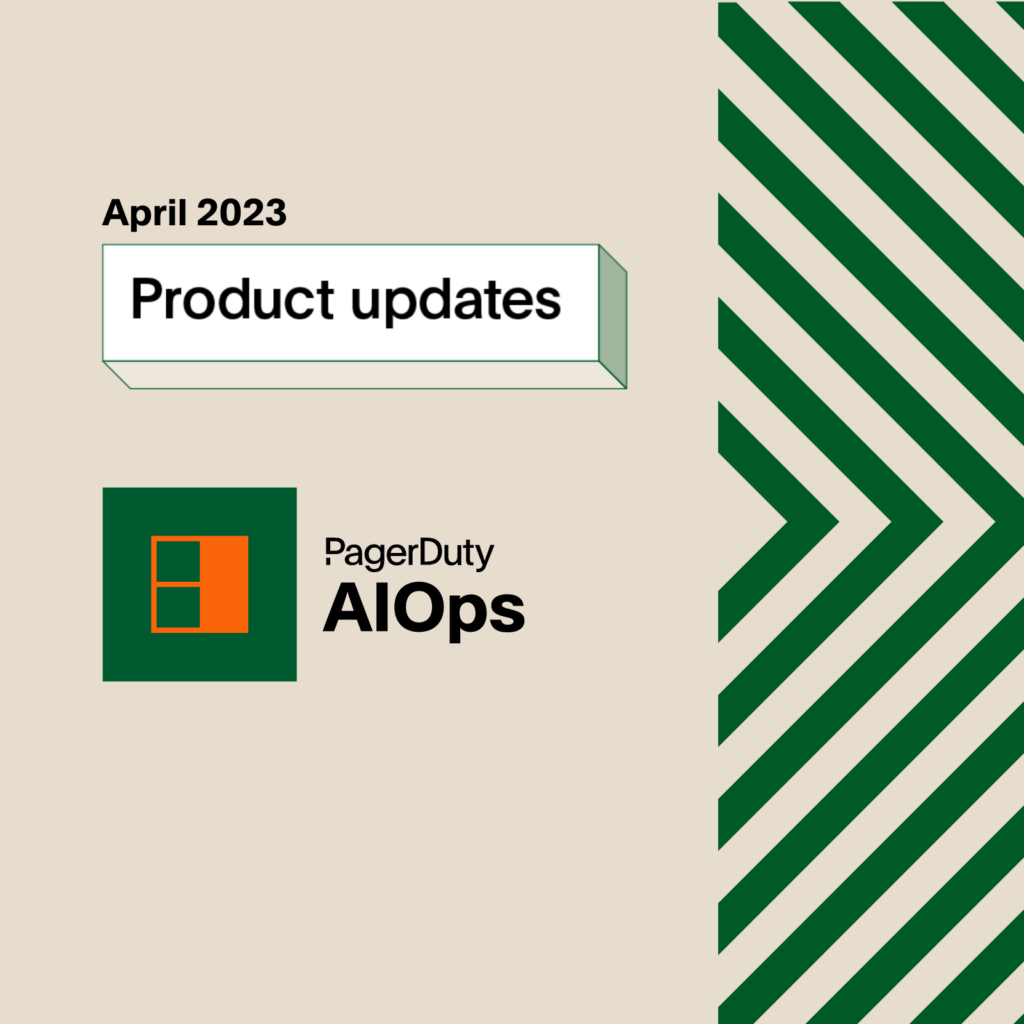2025 Starts Here: PagerDuty Innovations to Help You Tackle What’s Next
As we enter 2025, we reflect on a year committed to innovation and customer success at PagerDuty. In 2024, we introduced capabilities that empowered operations teams to mitigate risks, protect customer trust, and improve business outcomes. From managing global outages to addressing complex digital operations, the PagerDuty Operations Cloud enabled organizations to respond faster, work smarter, and build operational resilience.
To help our customers navigate the increasing complexity of modern operations, we focused on delivering innovation in three key areas: Incident Management Transformation, Automation Standardization, and Operations Center Modernization. These solutions, powered by AI and automation, are designed to help teams mitigate risk, reduce costs, and future-proof their operations.
Here are some highlights from our 2024 releases:
Incident Management Transformation: Accelerating Resolution
In 2024, we delivered new features to improve precision and agility in incident management, reinforcing our commitment to end-to-end coverage with guided remediation. These innovations, available as part of our Enterprise Incident Management plan, empower teams to confidently navigate incidents and build resilience over time:
- Incident Workflows: Automate incident response with highly configurable triggers, actions, and integrations, including Post-Incident Reviews to learn from incidents. Available for Business, DigOps (legacy), and Enterprise customers. Take the product tour.
- Incident Roles and Tasks: Assign roles and tasks in Slack, Microsoft Teams, or the Web UI to better ensure accountability and meet SLAs without ambiguity. Generally available to Enterprise customers. Take the product tour.
- Incident Types: Categorize incidents and create tailored workflows to address unique use cases across subsidiaries, offering enterprise-grade flexibility and improving incident processes at scale. Sign up for Early Access. Take the product tour.
- Service Reassignment: Move incidents across services seamlessly for faster triage and resolution and accurate operational insights. Sign up for Early Access.
- Reimagined chat experience: Manage incidents seamlessly within Slack and Microsoft Teams, leveraging generative AI capabilities of PagerDuty Advance to reduce coordination costs and accelerate resolution. New Slack capabilities include dedicated incident channels (public and private), notification channels, and intuitive slash commands to trigger incident actions or interactive help messages. Take the product tour.
Automation Standardization: Streamlining Operations
Our advancements in automation empower companies to work faster and smarter, making it easier to scale and optimize processes. These updates help teams prepare for future events by automating critical workflows and ensuring consistency.
- Incident Workflows: Automate incident response with highly configurable triggers, actions, and integrations, including Post-Incident Reviews to learn from incidents. Available for Business, DigOps (legacy), and Enterprise customers. Take the product tour.
- Incident Roles and Tasks: Assign roles and tasks in Slack, Microsoft Teams, or the Web UI to better ensure accountability and meet SLAs without ambiguity. Generally available to Enterprise customers. Take the product tour.
- Incident Types: Categorize incidents and create tailored workflows to address unique use cases across subsidiaries, offering enterprise-grade flexibility and improving incident processes at scale. Sign up for Early Access. Take the product tour.
- Service Reassignment: Move incidents across services seamlessly for faster triage and resolution and accurate operational insights. Sign up for Early Access.
- Reimagined chat experience: Manage incidents seamlessly within Slack and Microsoft Teams, leveraging generative AI capabilities of PagerDuty Advance to reduce coordination costs and accelerate resolution. New Slack capabilities include dedicated incident channels (public and private), notification channels, and intuitive slash commands to trigger incident actions or interactive help messages. Take the product tour.
Operations Center Modernization: Enhancing Efficiency
Tools introduced in 2024 helped operations centers focus on high-impact incidents and reduce noise, enabling teams to work smarter and faster.
- Operations Console Enhancements: Customize real-time views, triage, and take action on issues from a centralized location in real time. The new alert side panel offers visibility into alerts and metadata. Streamline actions like merging alerts and sync tools with ServiceNow to reduce MTTA and MTTR. Test the latest version, with the Alert Side Panel, by signing up for Early Access (AIOps customers). Take the product tour.
- Noise Reduction Updates: Streamline alert management with the new Noise Reduction Home Page, a centralized hub for configuring alert grouping to accelerate resolutions and reduce costs. Recently launched grouping types include Global Intelligent Alert Grouping (using proprietary machine learning and metadata fields), Intelligent Alert Grouping with Advanced Options (customizable grouping based on up to five metadata fields), and Content-Based Alert Grouping (now with expanded support for email alerts). All generally available for AIOps customers.
- Automation on Alerts: Triggers automations to prevent incidents from escalating, maintain service reliability, and reduce costs. AIOps customers can sign up for Early Access.
- Event Orchestration Enhancements: Dynamically route incidents to the right teams and assign escalation paths using historical data and event context. Features like Dynamic Routing and Dynamic Escalation Policies Assignment reduce reassignment costs and improve efficiency. Available for PagerDuty AIOps customers. Learn more about Event Orchestration with this product tour.
Customer Experience Operations: Building Trust
We introduced features that empower teams to maintain customer trust and satisfaction with seamless communication and transparency during incidents.
- Custom Fields for Salesforce: Sync Salesforce and PagerDuty custom fields for consistent contextual information, reducing resolution times and minimizing disruptions. For Enterprise Customer Service only.
- Status Page Automation: Automate real-time updates to status pages during outages and configure workflows to post incidents and updates automatically, lower costs, and reduce errors while maintaining customer trust. Generally available to Business and Enterprise plans.
- PagerDuty and ServiceNow: Sync notes between PagerDuty and ServiceNow for seamless communication between Customer Service and Product teams. This integration improves coordination, faster resolutions, and improved customer satisfaction. Generally available on all Customer Service Operations plans.
PagerDuty Advance: AI-Driven Proactive Operations
PagerDuty Advance transforms incident management with powerful generative AI capabilities infused across the PagerDuty Operations Cloud platform. Teams can work proactively and efficiently through every step of the incident lifecycle to significantly mitigate risk, improve productivity, and reduce operating costs. Since becoming generally available in July, PagerDuty Advance keeps delivering innovation to customers.
- New integrations with Amazon Q, Amazon Bedrock, and Amazon Bedrock Guardrails.
- AI-driven summary drafts of incidents can be generated directly in Slack or Microsoft Teams and imported into Post-Incident Reviews.
- A dedicated Analytics dashboard showing how PagerDuty Advance improves operational metrics.
Generally available as an add-on to Incident Management and Customer Service Operations plans. Take the product tour.
Looking Ahead to 2025
As we move into 2025, we remain committed to delivering innovative solutions that drive operational excellence. With AI and automation at the core of our platform, we’re helping teams future-proof their operations, mitigate risk, and focus on what matters most: delivering exceptional customer experiences. Thank you for trusting PagerDuty to support your operations.
Join us on the journey to operational excellence. Register for PagerDuty on Tour (London, Sydney, Tokyo, and San Francisco) to get insights from PagerDuty customers and executives on how to achieve operational resilience in the age of AI and automation.


